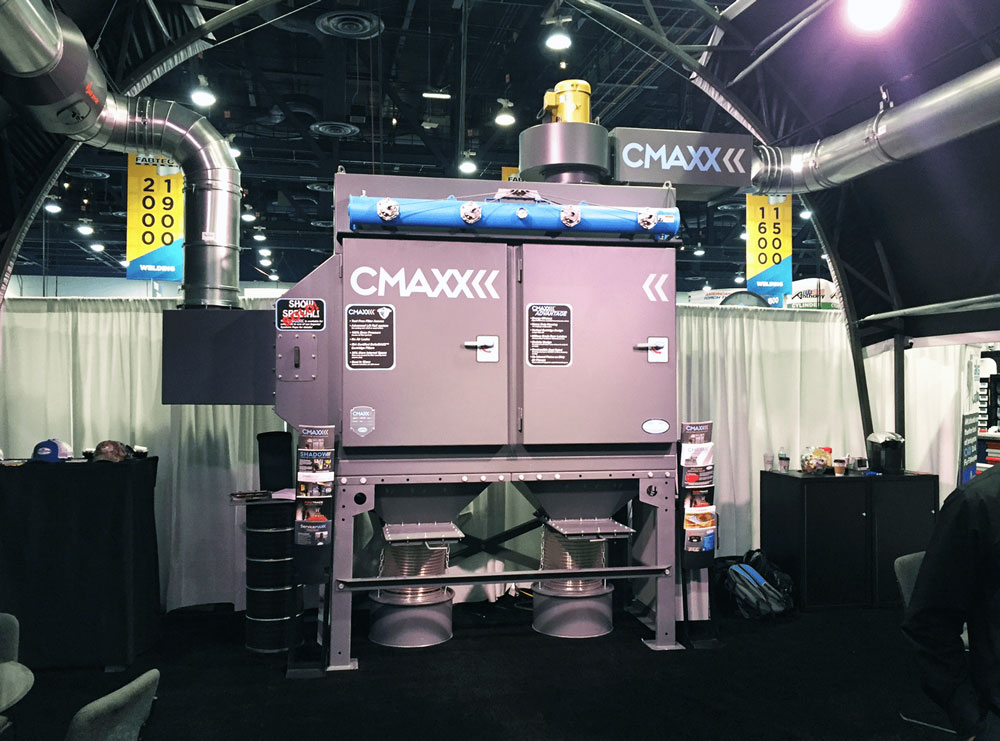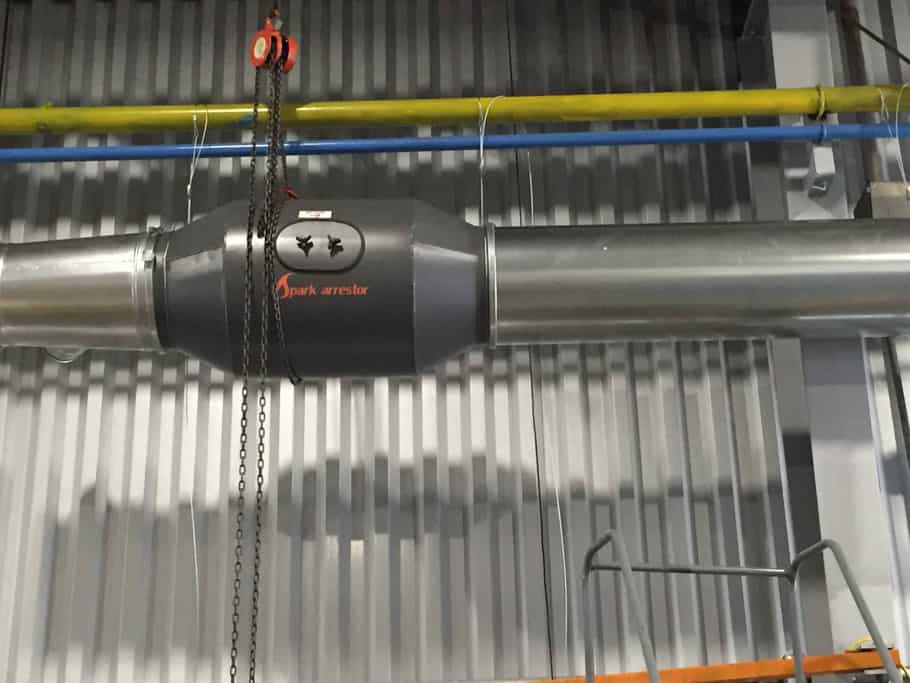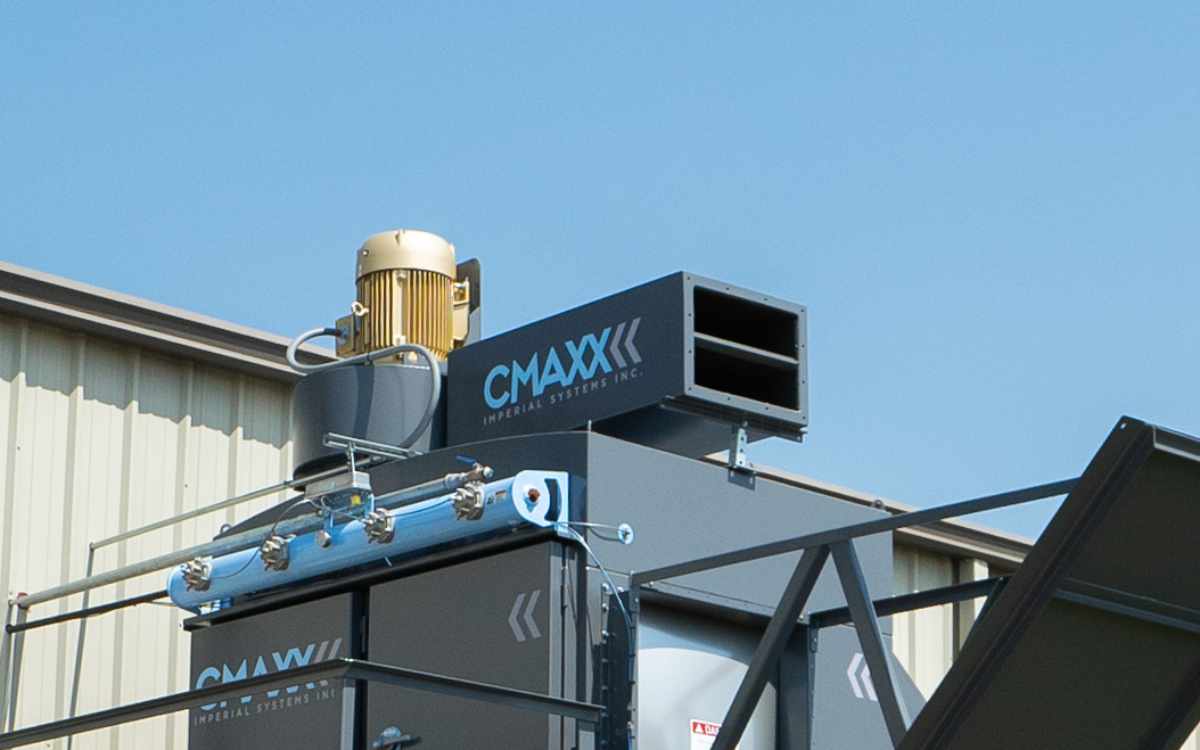
Managing weld smoke risks means dealing with very small particle size, toxic metals, and the combustibility of metal dust. Weld smoke and fumes are different from other types of dust, and a system needs to be designed to deal with it. A CMAXXTM dust and fume collection system will meet any metalworking or weld smoke control needs.
WELD SMOKE RISK: HEALTH
One of the risks of weld smoke is hexavalent chromium. This compound can cause skin sores and lung damage, and cancer of the lungs, kidneys, and other organs. Many metals are alloyed with chromium to make them corrosion-resistant.
Most of the particles in welding fumes come from the welding wire, but some of them come from the material being welded. Some of them can cause allergic reactions and an immune response called “metal fume fever”. Lead and manganese can damage the brain. Others, like hexavalent chromium and nickel, are known carcinogens and increase your risk of cancer. Learn more about welding fumes and cancer.
The particles that are put into the air as fumes from welding are extremely small. Most are smaller than one micron. This means they are small enough to get inside human cells and cause damage. This also means that welding fumes are lighter than air, especially when heated. A system for collecting these fumes must be designed to handle very small particles.
MANAGING WELD SMOKE RISK: FIRE AND EXPLOSION
Welding produces metal dust and gases that may be combustible. Some metals, such as aluminum, are very explosive as a dust. Almost all metal dusts have the potential to explode. Handling welding fumes means using appropriate fire suppression and prevention measures.

Suppressing sparks to keep them from getting into the collector can help prevent explosions from welding smoke dust. Spark Arrestors are important in keeping most sparks from getting to the collector. An explosion isolation valve can prevent a fire from traveling back through the ductwork. Chemical control systems can suppress or extinguish a flame, but only certain chemicals are approved for fires involving metal dust.
Filters can also be important for fire suppression in a welding smoke system. Filters with a fire-retardant coating they will resist burning and help control a deflagration. Some collectors are designed with filters that help isolate an explosion and keep it from causing damage inside the workplace. DeltaMAXXTM filters with fire-retardant coating will prevent a fire from occurring inside a dust collector.
HANDLING WELD SMOKE
Figuring out what type of fume extraction system to use in your facility is an important decision for managing the risks from weld smoke. Our systems engineers will consult with you to help you determine the best way to manage your weld smoke risk.
If there are not very many welders and they don’t always work at the same place, portable collectors can be a solution. They can be useful for handling point of source capture. An ambient system is designed to move a volume of air out of a large area and through filters.
For managing weld smoke, portable collectors can be easily moved around, but they are not as powerful as a larger collector. Central collectors are the most efficient for large areas, but if they are inside they take up floor space. Locating the collector outside is usually recommended for safe explosion venting.
One of the biggest advantages with an ambient system that recirculates the air back into the facility is energy cost savings. When heated or air-conditioned air is vented outside, the energy used is lost. Many businesses find that a fume collection system can pay for itself within two years with the money saved in energy costs.
CMAXXTM dust and fume collectors have proven themselves in the welding and metalworking fields. Our newest product, the SHADOWTM portable collector, gives you even more options for managing weld smoke . DeltaMAXXTM nanofiber filters are the best available material for capturing metal fumes. At Imperial Systems Inc., we are committed to helping you control your weld smoke risks.
(as seen in The Fabricator Magazine)


